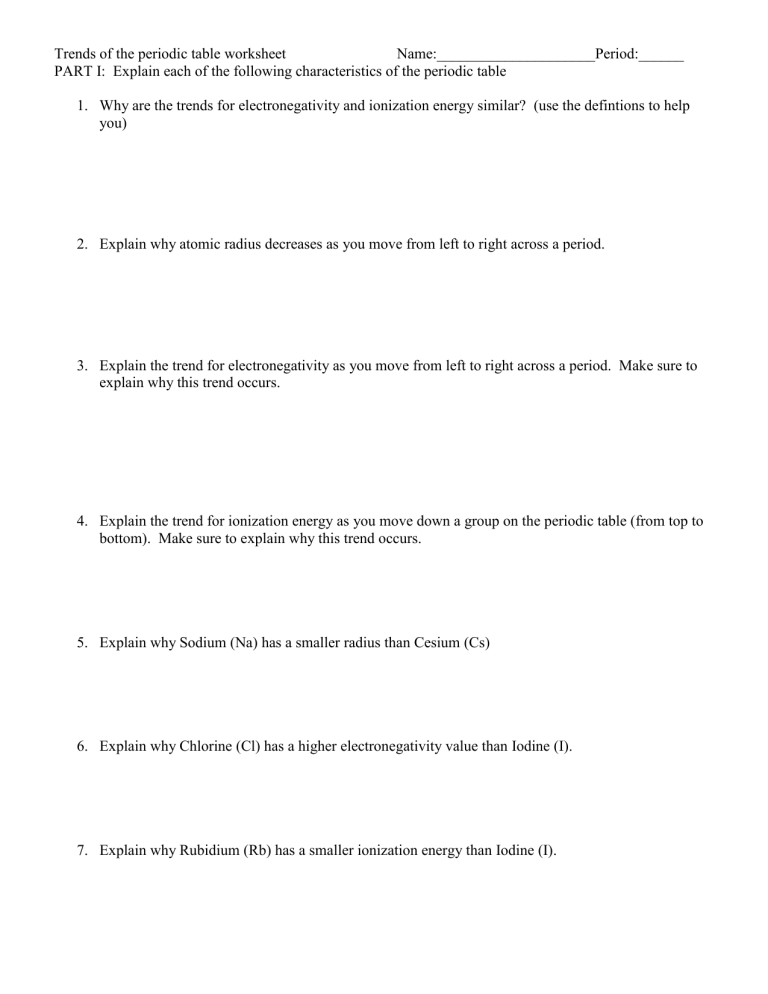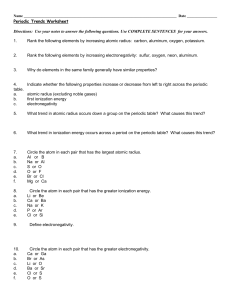
Trends of the periodic table worksheet Name:_____________________Period:______ PART I: Explain each of the following characteristics of the periodic table 1. Why are the trends for electronegativity and ionization energy similar? (use the defintions to help you) 2. Explain why atomic radius decreases as you move from left to right across a period. 3. Explain the trend for electronegativity as you move from left to right across a period. Make sure to explain why this trend occurs. 4. Explain the trend for ionization energy as you move down a group on the periodic table (from top to bottom). Make sure to explain why this trend occurs. 5. Explain why Sodium (Na) has a smaller radius than Cesium (Cs) 6. Explain why Chlorine (Cl) has a higher electronegativity value than Iodine (I). 7. Explain why Rubidium (Rb) has a smaller ionization energy than Iodine (I). Trends of the periodic table worksheet PART II: Name:_____________________Period:______ 1. outline the trends of the periodic table for ionization energy, atomic radius, and electronegativity on the periodic table above. 2. fill in these elements Cs, Mg, Cu, Ge, N, S, F on the periodic table above and use them to answer the following questions. a. Which of the above elements is the most electronegative? WHY? e Which of the above elements has the lowest ionization energy? WHY? b. Which of the above elements has the smallest radius of the metals? WHY? f. Which of the above elements has the largest atomic radius? WHY? c. Which of the above elements has the highest ionization energy? WHY? g. Which of the above elements is a metalloid with 4 valence electrons? How do you know it has 4 valence electrons? d. Which of the above elements is the most metallic (most characteristic of a metal)? WHY? h. Which element is the least electronegative? What does this mean in terms of electrons?
